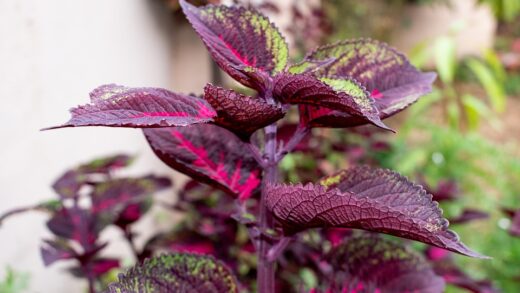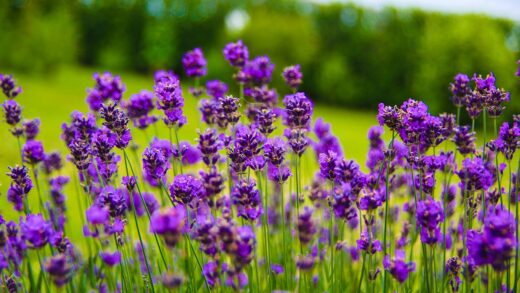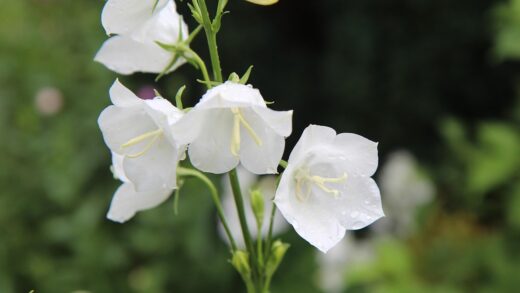The maintenance routine for Geranium x cantabrigiense is refreshingly minimal, and this extends to its pruning requirements. This is not a plant that demands regular or complicated cutting back to thrive. In fact, for much of the year, it requires no pruning at all. The primary reasons for pruning this particular geranium are for aesthetic tidiness, to encourage potential reblooming, and for the periodic rejuvenation of older clumps. The timing and method of these pruning tasks are simple and straightforward, fitting perfectly with the plant’s overall easy-going nature. A gentle approach is always best, as heavy-handed pruning is unnecessary and can detract from its natural, mounding form. The most common pruning task is deadheading, which involves the removal of spent flowers after the main blooming period has concluded in early summer. While this is not strictly necessary for the health of the plant, it offers several benefits. It tidies up the plant’s appearance, preventing it from looking messy as the flower stalks turn brown. It also prevents the plant from expending energy on producing seeds, redirecting that energy instead towards root and foliage development. In some cases, a thorough deadheading or a light shearing of the entire plant can even stimulate a second, albeit smaller, flush of flowers later in the season.
Beyond deadheading, the other main time for cutting back is in the very late winter or early spring. Because Geranium x cantabrigiense is semi-evergreen, it often carries a mixture of old and new leaves through the winter. By the time spring arrives, some of this older foliage can look a bit tattered and weather-beaten. A light “spring clean” to remove these damaged leaves helps to make way for the fresh, new growth that will soon emerge from the crown, resulting in a much lusher and more attractive plant for the season ahead. This is a selective process, not a hard shearing.
Occasionally, an older, established clump may benefit from a more significant rejuvenation pruning. If a plant has become very overgrown or has developed a woody, open centre, a harder cutting back can encourage it to produce fresh, dense growth from the base. This is typically done after the main flowering period and can be combined with lifting and dividing the clump to fully reinvigorate it. However, this is a task that is only needed every few years, if at all, as the plant generally maintains a good form on its own.
Ultimately, the pruning of Cambridge cranesbill is a matter of simple grooming rather than essential maintenance. The plant will grow perfectly well without any intervention at all, but a few timely and gentle cuts can enhance its appearance and vigour. It is a forgiving plant, so gardeners should not be afraid to tidy it up as needed. The key is to understand the purpose behind each type of cut – whether for tidiness, reblooming, or rejuvenation – and to apply the right technique at the right time of year for the best results.
Deadheading after flowering
Deadheading is the practice of removing faded or dead flowers from a plant. For Geranium x cantabrigiense, this is the most frequent pruning task you are likely to perform. The main flowering season is typically in late spring and early summer. Once this initial, profuse flush of blooms begins to fade, the plant is left with numerous spent flower stalks. Removing these is primarily for cosmetic reasons, as it instantly neatens the appearance of the plant, allowing the attractive foliage to become the main feature once again.
More articles on this topic
The process of deadheading this geranium is simple. You can either snip off the individual flower stalks at their base, where they emerge from the main mass of foliage, or you can take a pair of garden shears and give the entire plant a light trim. This shearing method is faster and very effective. Simply trim off the top few centimetres of the plant, removing the majority of the old flower stems along with the very tips of the foliage. This light shearing is often referred to as “giving the plant a haircut.”
One of the main benefits of this post-flowering trim is that it can encourage a new flush of growth. The plant will respond to the light cutting back by producing fresh, new leaves, which can quickly rejuvenate its appearance, especially if the foliage was looking a bit tired after the effort of flowering. This fresh growth keeps the ground cover looking lush and dense throughout the rest of the summer. It is a simple step that can make a big difference in the plant’s mid-season appearance.
In addition to promoting new foliage, a good shearing after the first bloom can sometimes encourage a sporadic rebloom later in the summer or early autumn. While this second flowering will not be as profuse as the first, the appearance of a few extra flowers later in the season is often a welcome bonus. By preventing the plant from setting seed, you are encouraging it to put its energy into other activities, which can include producing a few more blossoms. This makes the simple task of deadheading or shearing a worthwhile effort for the tidy gardener.
The spring clean-up
As a semi-evergreen perennial, Geranium x cantabrigiense often emerges from winter looking a little worse for wear. It will typically have a mixture of green, healthy leaves that have survived the cold, alongside older leaves that have been damaged by frost and winter weather, turning them brown, black, or tattered. A thorough spring clean-up is an important step to prepare the plant for the new growing season. This tidying process allows the new growth to emerge into the light and air without being impeded by old, decaying foliage.
More articles on this topic
The best time to perform this task is in early spring, just as you begin to see the first signs of new growth pushing up from the crown at the base of the plant. Waiting until this point ensures that you will not be trimming too early, and the presence of the new shoots makes it easy to see what needs to be removed. It is best to complete this task before the new leaves have fully unfurled, as it is easier to work around small buds than larger, delicate leaves.
Using a pair of sharp, clean secateurs or snips, selectively cut away any foliage that is clearly dead or badly damaged. Cut the stems of these old leaves right back to the base of the plant. The goal is to be neat and tidy, removing only the undesirable parts while leaving any healthy, green overwintered foliage in place. This is a more careful and selective process than the post-flowering shear; it is about grooming the plant and improving its health by removing decaying material that could potentially harbour disease.
This spring clean-up not only improves the plant’s appearance but also enhances air circulation around the crown. As the weather warms up, good air movement is crucial for preventing the development of fungal diseases. By removing the old, matted leaves, you are opening up the centre of the plant and creating a healthier environment for the new season’s growth to develop. It is a simple but vital annual ritual that sets the stage for a healthy and vigorous plant.
Rejuvenation pruning for old clumps
Over a period of several years, a clump of Geranium x cantabrigiense can sometimes become overly dense or develop a less productive, woody centre. When this happens, a more drastic form of pruning, known as rejuvenation pruning, can be employed to restore its vigour. This is not an annual task, but rather something to consider every three to five years, or whenever you notice that a clump is looking tired, open in the middle, or is not flowering as well as it used to. This process essentially resets the plant, encouraging it to produce a dense flush of fresh new growth.
The best time to perform a rejuvenation pruning is immediately after the main flowering period has finished, typically in early summer. This timing allows the plant the rest of the growing season to recover and put on new growth before winter arrives. To do this, use a pair of sharp shears to cut the entire clump back hard, leaving just 5-10 centimetres of growth above the ground. While this may look severe, this hardy perennial will respond robustly to the treatment.
After cutting the plant back, it is a perfect opportunity to give it some additional care to support its recovery. Water the area thoroughly and apply a layer of compost around the base of the trimmed plant. The nutrients from the compost will provide the energy needed to fuel the production of new shoots. Within a few weeks, you should see fresh, vibrant new foliage beginning to emerge from the base, and the plant will quickly regrow into a dense, healthy-looking mound.
Often, rejuvenation pruning is combined with division. After cutting back the top growth, you can lift the entire clump with a garden fork. This allows you to remove the old, woody central part of the plant and replant the younger, more vigorous sections from the outer edges. This combination of pruning and dividing is the ultimate way to reinvigorate an old clump, ensuring it remains a healthy and productive part of your garden for many more years.
Pruning for propagation
Pruning and propagation can go hand-in-hand, particularly in the spring. As you are performing your spring clean-up or simply observing the new growth on your Geranium x cantabrigiense, you can take the opportunity to create new plants through cuttings. The most effective type of cutting for this plant is a basal cutting. These are young, non-flowering shoots that are taken from the very base of the plant, right where they emerge from the underground rhizome. This method allows you to propagate new plants without having to dig up the entire parent clump.
In the spring, identify several vigorous new shoots that are approximately 5-10 centimetres tall. Instead of cutting them with secateurs, it is often better to gently pull them away from the main plant. If you pull carefully, the shoot will often detach with a small piece of the pale, woody rhizome attached at its base. This “heel” of older tissue is rich in rooting hormones and dormant buds, which greatly increases the chances of the cutting successfully developing roots.
Once you have your basal cuttings, prepare them by removing the lowest one or two leaves to create a clear stem for insertion into the rooting medium. You can dip the base of the cutting in a rooting hormone powder to further encourage root development, though this is not always strictly necessary for this easy-to-root plant. Insert the prepared cuttings into a pot filled with a moist, well-draining medium like a mix of compost and perlite.
To create a humid environment conducive to rooting, you can cover the pot with a clear plastic bag or place it in a propagator, ensuring some ventilation. Keep the cuttings in a bright location but out of direct sunlight, and keep the medium consistently moist. Roots should form within several weeks. This method of pruning for propagation is an excellent way to increase your stock of this wonderful ground cover or to produce new plants to share with fellow gardeners, all while you are performing routine spring maintenance.


















